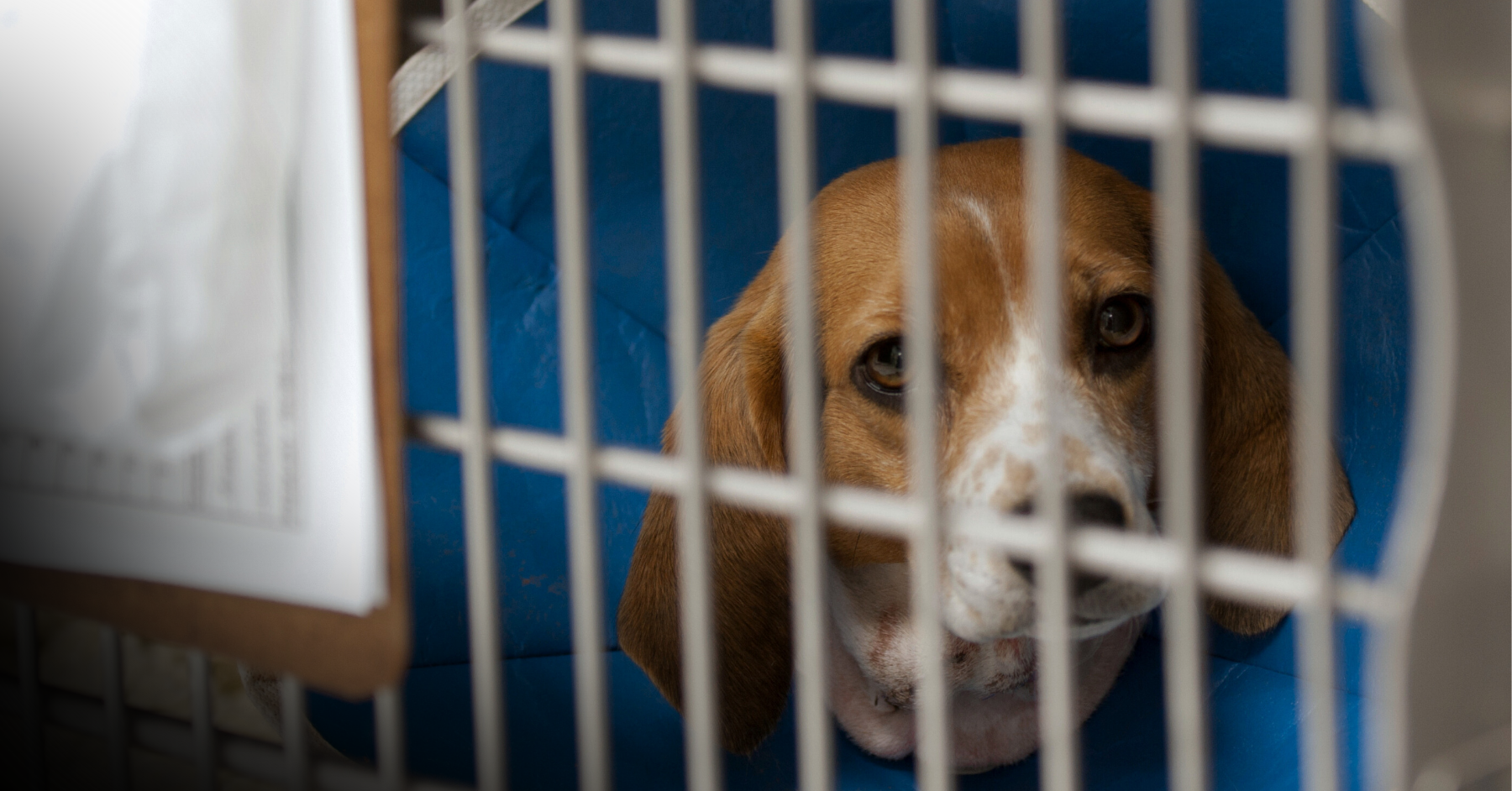
“Mad” and “Ouch” Among the Words Animals in Labs Would Use?
Over 250 years after Jeremy Bentham coined one of the most well known phrases in the animal protection movement – “The question is not, Can they reason? Nor, Can they talk? But, Can they suffer?” – humans continue to miss Bentham’s fundamental point.
Indeed, humans remain absorbed in questions of other-than-human reasoning and talking (while, at the same time, staying largely apathetic to or dismissive of their suffering).
The question of whether animals can “talk” (and “reason”) has become a lucrative area of animal research; though, true to humans’ self-centeredness, the question has largely been reframed around whether animals can talk in human language.
Research has demonstrated unequivocally that other-than-human animals – from bees to whales – communicate, share information, exchange ideas, etc., with one another in myriad ways; and, indeed, “behaviorists are becoming convinced that the ‘inner processes of many animals are as complex as those of humans,’….”
Yet, humans remain fixated on anthropocentric investigations into whether animals can use the human spoken word.
Spoiler alert: Though they should not need to, they can.
Just like the other, contrived “hurdles” humans have erected to separate themselves from other species, other-than-human animals are clearing this one: they are using human language to communicate with their human family members and caregivers.
Evidence of this is being collected vis-a-vis a partnership between company FluentPet and the University of California, San Diego, which is exploring other-than-human animals’ aptitudes for using “word boards” to learn and, then, utilize human words to “talk”.
The results?
- Dogs, the primary subjects of this investigation, have proven able and willing to use human words to communicate everything from requests (such as “to play with specific [canine] friends”) to questions (such as “about a family member because the person has been absent”) to concerns (such as about a housemate of another species who is “having trouble moving”). (Read about Stella telling her guardian that her dinner is late, and that she wants to play; then, watch Cooper ask to play in the pool, and watch Bunny report that she’s “mad” because of a paw “ouch”.)
- Cats communicate well using the boards, though they do so differently than dogs. (Read about Billi’s use of 50 different human words, and, then, watch Loki tell her guardian that she has an ear infection – later confirmed by her veterinarian.)
- Farmed animals and birds have been taught to use the boards and similar tools. (Watch a goat named Cupcake ask to be brushed, and, then, watch a bird named Isabelle report that she has a stomach ache.)
The breadth of these findings have given researchers “confidence that perhaps any animal can use them” – meaning any animal may be able to talk to humans using human words.
While interesting (especially because we humans – who tout ourselves as the most intelligent and able species – have difficulty identifying, much less using, other species’ languages), we must understand that this research is not about helping other animals.
Rather, it’s about building the concept of “uniquely human thinking”.
In other words, researchers appear poised to use these findings to concoct some new, artificial separation between humans and other animals.
Humans’ preoccupation with separating “us” and “them” (i.e., facilitating general acceptance of human domination and exploitation) is but one of the ugly realities of animal research.
As for the others, we are left imagining what its victims would say if they had access to word boards . . . and lamenting that “mad” and “ouch” would certainly be among the best of it.
The animal testing industry goes to great lengths to keep everything that they’re doing hidden. Please tell your senators to support S. 778, the Cost Openness and Spending Transparency (COST) Act. This bill would require public disclosure of the total cost to taxpayers for every project supported with federal funds.
Share this blog on Facebook or X (Twitter).